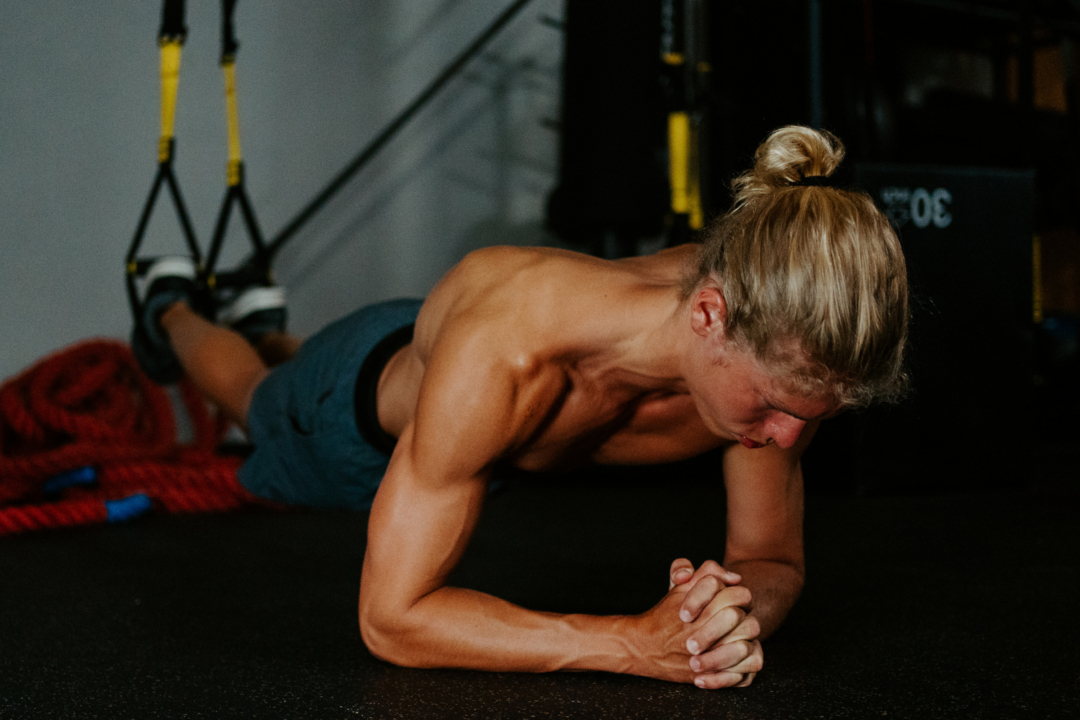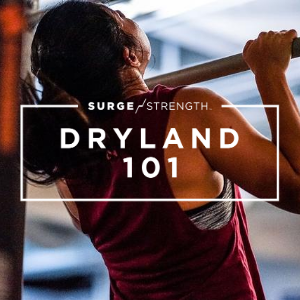Before you completely scrap your dryland training program, let’s talk about how you can tweak your program in order to get your team better results.
Coaches – we are calling upon you to take the advice you would give to your athletes. When coaching, we tell our swimmers to start with small, consistent changes in order to make improvements in the water and in dryland. We do this to keep things simple and effective for our swimmers. The same principle applies to us as we prepare a dryland program. The best way you can improve your programming is by keeping dryland simple and effective. Below we are going to discuss three ways to give your athletes a better dryland experience:
1) Exercise Ratios in Dryland Training
There are five basic movement categories in dryland: push, pull, hinge, squat, and brace. All of these movements work together to give the swimmer a total body resistance training workout.
One way you can see if your programming is balanced is to make sure you have at least a 1:1 ratio of push exercises to pull exercises and squat exercises to hinge exercises. This means that if you are doing three upper body push exercises, you should see that your program at some point in your training week also has three upper body pulling exercises. If you have three squat variations or knee dominant exercises, you should also have three hinge variations or hip dominant exercises to balance it out.
In the SURGE Strength Dryland Certification Curriculum, we recommend aiming for a 1:2 ratio or sometimes even a 1:3 ratio of push to pull and squat to hinge due to the demands swimming places on the body. If you find that your program has a lot more squatting and pushing exercises, you may be likely to see more shoulder and knee injuries crop up in your swimmers.
To keep programming simple and to avoid changing your entire program, simply swap out some of your pushing and squatting exercises for exercises that work the posterior chain and address common muscular imbalances in swimmers. If you need ideas, check out our YouTube channel where we have lots of exercise examples in all categories.
2) 3 Phases of Dryland Training
It is easy to get lost in periodization when it comes to organizing your dryland training program over the course of each training session, block, and year. As you structure your dryland, we recommend sticking to three basic phases: strength, strength/power, and power.
- Strength Phase: focus on lifting off of a high percentage of the athlete’s 1 repetition maximum (1RM)
- Strength/Power Phase: a combination of both or loaded exercises performed with a focus on explosiveness or speed
- Power Phase: more explosive movements like plyometrics
By keeping it simple with these three phases in mind, coaches can spend less time going broad with training variables and can take a deep dive into the basic principles of power and strength. Basic strength with power is the foundation for making swimmers better athletes and ultimately faster in the water. We go into detail on the when, how, etc. of our phases in the Certification (SSDC).
3) Knowing your Goals
Ask yourself, what are my goals with dryland training? These can be broken down into both short- and long-term goals.
For short term goals, consider how each training session is working together in order to build an optimal training phase. For example, if you are in a taper, a training session full of volume and intensity probably is not going to match your goals of recovery and building up for a big race. Instead, you will probably want to opt for movements focused on power, function, and mobility. Swapping out exercises within each small phase of training adds up to big changes over a training year.
When looking at the bigger picture of addressing long-term goals, you should be able to easily justify how each training phase is serving your swimmers in a way that builds and maintain strength and athleticism, as well as keeping them injury-free. If you find that a training block does not have any rhyme or reason, consider re-evaluating what your team needs. You can do this by conducting a needs analysis, creating movement screenings, and occasionally running your swimmers through exercise testing. Knowing your goals and what options you have in order to meet them will simplify your programming and keep you on target for meeting both your short- and long-term goals.
Conclusion
Above all, do not be overwhelmed with your dryland program planning. Keeping it simple not only saves you time as a coach but makes it easier for your swimmers to work their individual dryland training sessions as well.
Antoine de Saint-Exupery, a 20th-century writer, once said, “Perfection is achieved, not when there is nothing more to add, but when there is nothing left to take away.” The best dryland training programs are often built on small, consistent changes that leave space for both the coach and athlete to adapt and modify as the program unfolds.
Keeping your exercise plan is balanced with pushes, pulls, squats, and hinges helps you avoid injury and keep up with the demands placed on the body from swimming a significant amount of yardage. Sticking to the three basic training phases of strength, strength/power, and power allows you to go deeper into the foundational principles of dryland training. Finally, breaking down your goals and knowing the purpose of each part of your training plan helps the athletes understand their dryland and execute it better.
Equipping your program with these 3 key concepts will give your dryland a clear path. Then, it will be much easier to prune your program of anything that is not serving your team and your goals in the most optimal way possible. Learn more in the SURGE Strength Academy with our Dryland 101 Courses or take a deep dive into your dryland education by becoming SURGE Strength Dryland Certified (SSDC).
ENROLL NOW FOR FREE IN THE SURGE STRENGTH ACADEMY
BECOME SURGE STRENGTH DRYLAND CERTIFIED (SSDC)
BUILD BETTER ATHLETES TO GENERATE FASTER SWIMMERS
Courtesy of SwimSwam’s exclusive dryland training partner, SURGE Strength.
SURGE Strength, a strength training brand created by Chris Ritter, CEO of RITTER Sports Performance, aims to build better athletes and faster swimmers through dryland programs, and coaching education.







